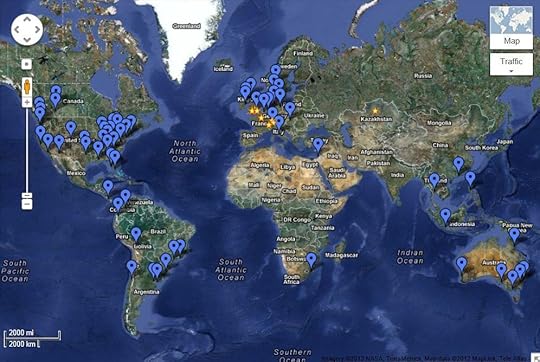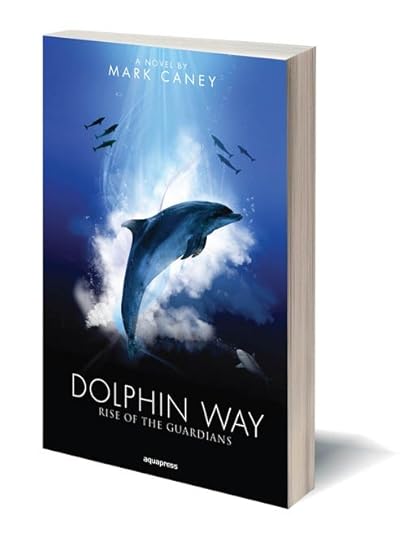Mark Caney's Blog, page 44
August 30, 2012
Annual dolphin hunt begins 1st September
Ric O’Barry’s Dolphin Project returns to the notorious Cove – made infamous by the Academy Award-winning documentary The Cove– for the beginning of the six month-long dolphin-slaughter season on Sept. 1st 2012.
“Our Dolphin Project Team and I are returning to Taiji once again to oppose the killing of dolphins and to warn the people of Japan about the dangers of eating mercury-contaminated dolphin meat,” states Ric O’Barry, Director of Earth Island Institute’s Dolphin Project. “The hunts must end, and the people of Japan will be the ones to end the hunts.”
“We have made some progress; the number of dolphins being killed in Taiji has gone down for the past four years of our Save Japan Dolphins Campaign,” noted O’Barry. “The Japanese people, being warned about mercury and other contaminants in dolphin and whale meat, are buying less and less of it.”
Beginning at 11 AM on September 1st, representatives from 5 continents will arrive at the Cove in Taiji, Japan, to conduct a series of events to mark the new dolphin slaughter season and to tell the world what is happening in Taiji:
• Participants will form a circle for a moment of silence for the souls of the dolphins that have been killed in the past and will be killed in the coming season. Taiji receives permits to kill almost 2,100 dolphins each year in the most horrible ways imaginable. The prayer will also honor the victims of the March 2011 earthquake and tsunami, as well as those who lost their lives in Taiji/Wakamaya Prefecture during the August 2012 typhoon. The Dolphin Project had team members on the ground during both tragedies and are deeply saddened by the loss of life and turmoil.
Full story: SaveJapansDolphins

Fears that even more dolphins will be killed by trawlers
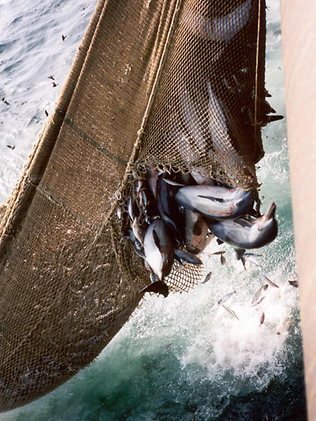 Dead dolphins crushed by the weight of a super trawler’s massive haul are discarded – a scene conservationists fear will be repeated along the Australian coast.
Dead dolphins crushed by the weight of a super trawler’s massive haul are discarded – a scene conservationists fear will be repeated along the Australian coast.
Serious flaws in how the Dutch-owned Margiris – the world’s second largest trawler – will reduce its bycatch of whales, dolphins and sharks when it is allowed to net Australian waters have been identified by Greenpeace and The Australian Marine Conservation Society.
Greenpeace’s super trawler expert Pavel Klinckhamers said the photos were taken on Dutch-owned super trawlers fishing off Mauritania in 2006.
“Trawlers like the Margiris can trawl for seven hours and if a dolphin is caught it drowns or is crushed if no one notices it’s in the net,” he said.
Greenpeace said Seafish Tasmania, the firm which wants to catch 18,000 tonnes of baitfish off the coasts of NSW, Victoria, Tasmania, South Australia and Western Australia, had studied the effectiveness of seal excluders on their trawlers and found seals died in every second trawl.
Source: Herald Sun

August 27, 2012
British pre-school pupil sings against dolphin hunting
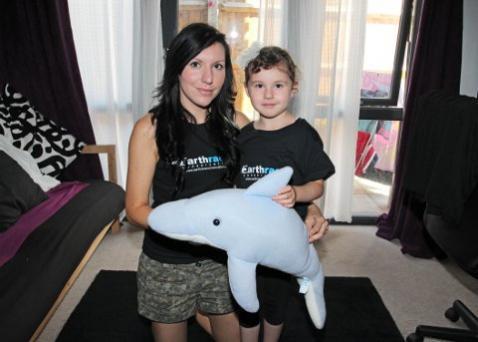
Click image for video
A four-year-old has lent her voice to a protest song released ahead of international demonstrations against dolphin hunting.
Leela Byrne’s Dolphin Song, mixed by DJ Tim Hawkins, will be played outside Japanese embassies at rallies around the globe on August 31 as part of Japan dolphin day 2012.
The four-year-old, from Selhurst, UK, is the daughter of avid campaigner and UK director of volunteer group Earthrace Lucy Byrne.
The 29-year-old said: “When I first became involved I visited Leela’s play school, Stepping Out. To get the kids involved you sing a song and walking home she began singing her own version.
“I filmed it and put it on YouTube, but I then forgot about it. Building to this year’s rally we discussed about having a song, and this came to mind.”
Source: Croydon Guardian

August 22, 2012
Dolphins Return to US River, Fate Uncertain
A group of four dolphins have been spotted in New Jersey’s Navesink River — the same river that turned into a graveyard for other dolphins several years ago.
In the summer of 2008, a group of about a dozen dolphins started appearing in the river after finding summer fish to feed on. And just as back then, this summer’s group appears to be finding their meals in the Navesink.
“My guess would be there’s a ton of bait in the water, bunker, some small red snappers in there,” Mike Pawlikowski of the Oceanic Marina told NBC 4 New York on the marina’s boat in the middle of the river.
The four dolphins were first spotted Friday, then again over the weekend, as first reported by the Red Bank Green newspaper.
Then the sightings seemed to end — at least until Tuesday, when boaters reported sightings west of the Oceanic Bridge between Rumson and Middletown.
Just a handful of boaters had spied the mammals. Staten Island’s Brittany Regan was one of them.
“I freaked out,” said Regan, because she thought she was looking at sharks.
She wasn’t, and for now, the dolphins are being welcomed back to the tidal river.
Remembering four years ago, the Oceanic Marina’s Barbara Foley recalled going out into the river to “just sit there and wait for them. It was a very peaceful and beautiful feeling.”
By early fall of 2008, there were signs of stress among the group as their fish supplies swam out to sea.
The dolphins refused to leave, and reports of dead dolphins washing ashore surfaced week after week.
Many wanted to mount a rescue effort to drive or lead them out to sea, but NOAA Fisheries Service refused permission.
Full story: NBC New York

August 18, 2012
Identifying Dolphins With Technology
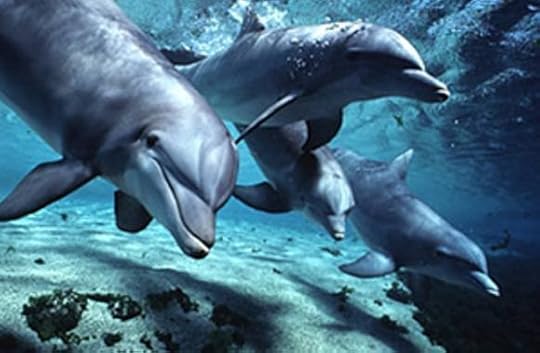 Dolphins all look pretty similar. So it can be problematic when your job requires you to identify individual dolphins in order to study their behavioral and ecological patterns. Photo-identification techniques — recognizing a particular dolphin by the nicks, scars and notches on its dorsal fin — are useful, but tedious.
Dolphins all look pretty similar. So it can be problematic when your job requires you to identify individual dolphins in order to study their behavioral and ecological patterns. Photo-identification techniques — recognizing a particular dolphin by the nicks, scars and notches on its dorsal fin — are useful, but tedious.
“Researchers photograph dolphins in their natural surroundings and compare new dorsal fin photographs against a catalogue of previously identified dolphins,” explains Kelly Debure, professor of computer science at Eckerd College in St. Petersburg, Florida. “These catalogs are often organized into categories based on either distinct fin shape or location of predominant damage. The manual photo-identification process, although effective, is extremely time consuming and visually stressful, particularly with large collections of known dolphins.”
It was time to bring dolphin identification into the digital age.
Debure, along with Eckerd students, developed DARWIN, or Digital Analysis and Recognition of Whale Images on a Network, a computer program that simplifies photo-identification of bottlenose dolphins by applying computer vision and signal processing techniques to automate much of the tedious manual photo-id process.
“DARWIN is a software system which has been developed to support the creation of reliable and intuitive image database queries using fin outlines,” she says. “It effectively performs registration of image data to compensate for the fact that the photographs are taken from different angles and distances and compares digital images of new dorsal fins with a database of previously identified fins.”
The software uses an automated process to create a tracing of the fin outline, which is then used to formulate a sketch-based query of the database. The system utilizes a variety of image processing and computer vision algorithms to perform the matching process that identifies those previously cataloged fins which most closely resemble the unknown fin. The program ranks catalog fin images from “most like” to “least like” the new unknown fin image and presents images for side by side comparison.
DARWIN is used by researchers at several academic institutions and by Eckerd College’s own Dolphin Project, a team of students who conduct population surveys of the bottlenose dolphin (Tursiops truncatus). Initiated in 1993, the project has trained dozens of students to take and analyze scientific data on dolphin populations to better understand their population dynamics and ecology in Tampa Bay. Such information can be used to help conserve dolphin populations.
The DARWIN software is free and available for download. Over 20 years, Debure and Eckerd students have continued to refine the software and are adapting the software’s algorithms to make it appropriate for identification of other species.
Full story: Science Daily

Global protests at start of annual dolphin hunt
On or around Sept. 1, 2012, activists in cities around the world will gather at their local Japanese embassy or consulate to voice their concerns over the dolphin drive fisheries which begin on this day. Click on the map below for more.

August 16, 2012
Ric O’Barry to lead trip to Taiji
By Ric O’Barry Director Dolphin Project Earth Island Institute
I will be returning to Taiji on Sept. 1st with international supporters for the first day of the new dolphin hunt season.
I invite you to join me and other members of our Dolphin Project/Save Japan Dolphins Team for this peaceful mission. Help us keep the dolphin hunts in the public eye, so there is a future for dolphins in Japan that is free from their capture, slaughter and exploitation. We will also continue to expose the hazards of consuming mercury-contaminated dolphin meat, which no one in the world should be eating.
Our 6-day trip includes arrival in Osaka (one day), sightseeing in Osaka (one day), bus down to Taiji with stops of interest (one day), a ceremony and other events at the Cove on Sept. 1st (one day), a day of sightseeing in the local area plus discussions of the issues (one day), return by bus to Osaka (one day), fly home.
See more: Save Japan’s Dolphins

August 14, 2012
Last chance to win a copy of Dolphin Way!
The free competition to win one of five signed copies of Dolphin Way: Rise of the Guardians ends today!
Goodreads Book Giveaway
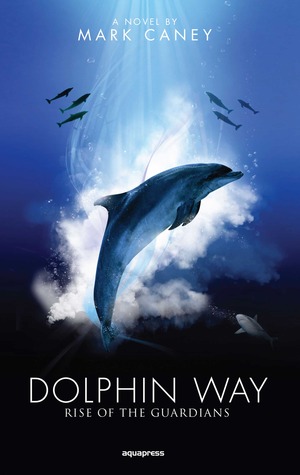
Dolphin Way
by Mark Caney
Giveaway ends August 15, 2012.
See the giveaway details
at Goodreads.
Watch the book trailer video here:

August 13, 2012
Dolphin Way rated on Fantasy Book Review site
The well known Fantasy Book Review site has just published a review of Dolphin Way: Rise of the Guardians.
Here is an excerpt:
“Dolphin Way begins with the mysterious death of Born Into Summer, a young friend of the book’s protagonist, Touches The Sky. It expands into a conflict between The Way, a quixotic code of conduct that has kept dolphins eco-friendly pacifists for millennia, and the rapid toxification of the ocean that is pushing it towards obsolescence. Touches The Sky’s natural habitat is becoming a more violent and competitive place, and throughout his adventures Sky makes discovery after discovery leading him to believe that this is all thanks to those destructive, wasteful humans up above.
When I first read the synopsis for Dolphin Way I was reminded of another book, namely The Call of the Wild. As I made my way through the text however, I found it to be more like James Cameron’s Avatar than anything Jack London ever wrote. This novel isn’t about anthropomorphizing an animal. It is about a broader set of issues and constructs, like life cycles, conservation and environmental degradation. Dolphin culture, with all of its designations like “starwriters,” and “calculators” is portrayed with painstaking detail. Roger Ebert might compliment the author, Mark Caney on his “worldbuilding” abilities, but it does make one wonder how much of the sophisticated society portrayed in the book is fantasy, how much is hearsay and how much is scientifically accurate, especially since the author himself clearly has an encyclopedic understanding of biology.”
To read the full review click here. To get a copy of Dolphin Way or a free sample click here.

Wild dolphins filmed by fishermen
A submerged camera captured dolphins swimming underwater and produced a stunning video that has gone viral over the weekend. The owner of this video that caught the pod of dolphins swimming named it “The Blue,” and it was featured on ABC News on Saturday. Men out fishing for an afternoon off Santa Cruz, never expected to capture such an amazing sight on video, but they did!
Source: The Examiner


